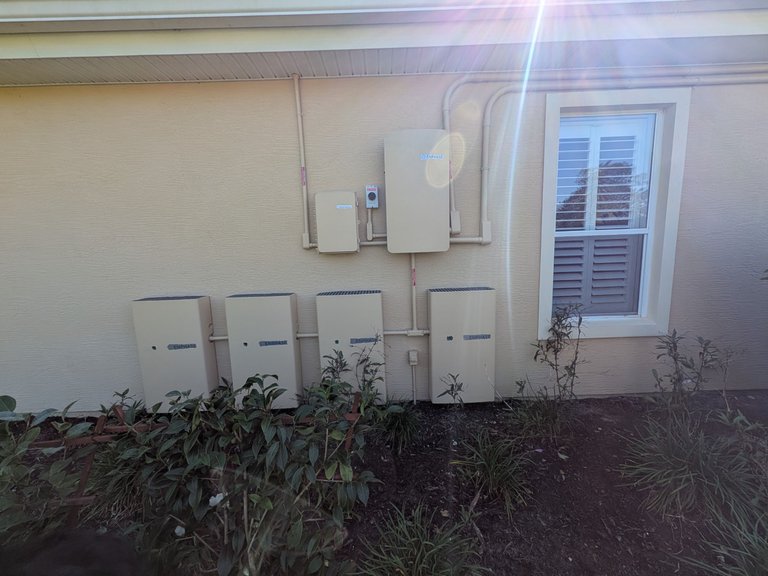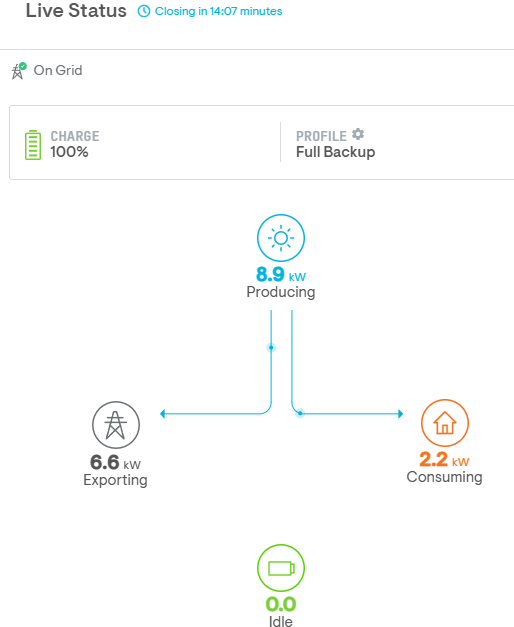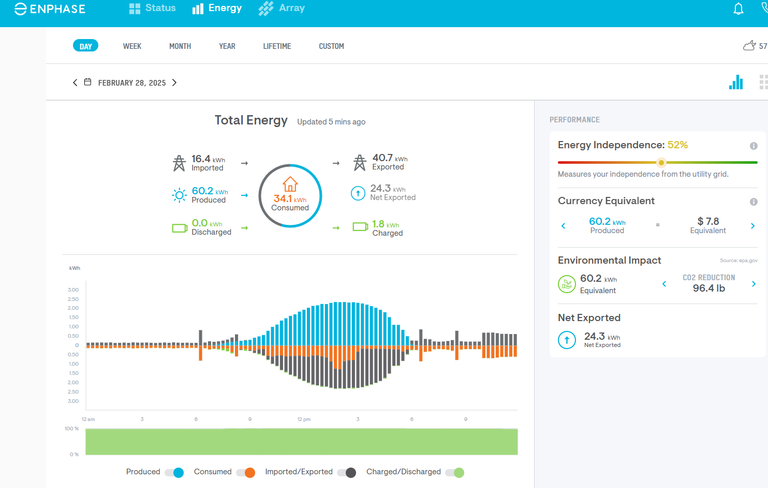So another month of Solar production down in the books. For those following my posts, I purchased Solar with the primary goal of providing backup power during the frequent storms and hurricanes here in Florida vs. installing a propane generator.
So far, still very pleased with the outcome. I'm not only making money back, so far $1.2K (where a propane generator does not), but I'm also powering my Electric Chevy Blazer EV. We also just received a nice juicy tax rebate check from the IRS for 30% of the overall system cost.
Charging the vehicle has certainly impacted my dream of producing enough to go completely off grid. I think I'd need at least another dozen panels if not 20 or so.
My system:
Last July, we installed a 32 panel system rated at 13kWh, and 4 Enphase Battery Backups rated at 5kWh each (20 kWh total battery).
See previous posts here:
https://peakd.com/hive-168869/@ksteem/weekend-after-weekend-and-annual-solar-report
https://peakd.com/hive-168869/@ksteem/weekend-solar-install-with-battery
Overall Production:
Here's the overall Lifetime production (7 1/2 months). Equal to 6.6 tons of CO2 reduction or equal to planting over 112 trees. You can see here we have produced a little over half the energy consumed (including vehicle charging) with Solar. This would easily be over 75% or 80% of consumption if not for the Vehicle.
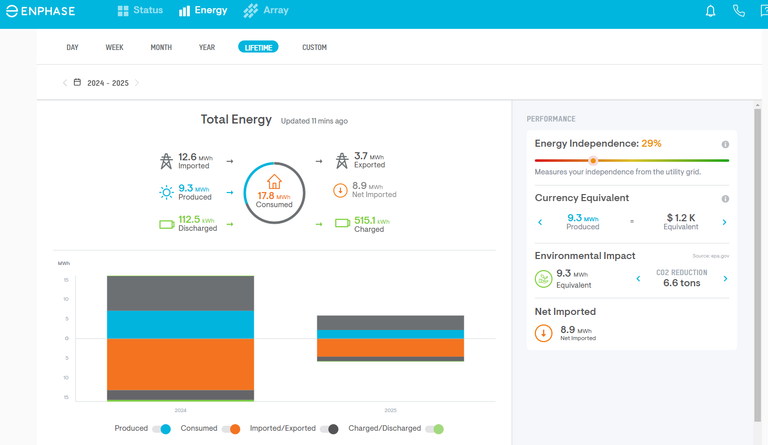
Here's a breakdown by month for last year and this year.
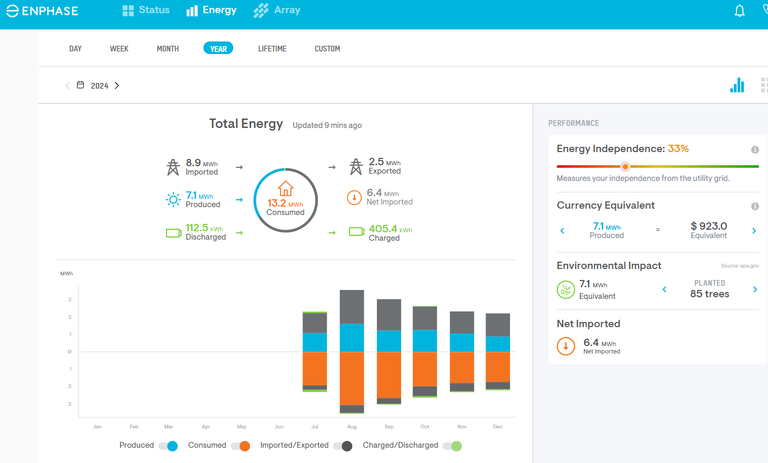

Most months we are producing about 1.2 - 1.6 MWh, the hot summer months July-Sept at 1.6 MWh, the cooler winter months here Oct-Feb all about 1.2 MWh
Here you can see in Feb, even with dirty panels, we still would have produced enough to more than power the household if we didn't have the vehicle charging in addition.

The Bad:
Here's a glitch new to me, Apparently here where we are in Florida, we get a pretty heavy pollen dump. It covers the cars, the house windows, basically everything outdoors. It looks like it was enough to cause about a 10% production loss when I compared clean panels to dirty ones.
Here was my first attempt at cleaning. Half the panels got clean and the others, well halfway clean. I ended up buying a 24 foot extension pole for the window cleaning scrubby and using that later to clean it better. It takes some getting used to, and multiple cleanings with rinsing off the cleaning pad and panels well in-between scrubs to get them clean.
The Ugly:
If you zoom and look at the panels on the left you can see how they didn't get very clean the first time around. Especially the ones on the far left, and that very top panel up there all by itself.
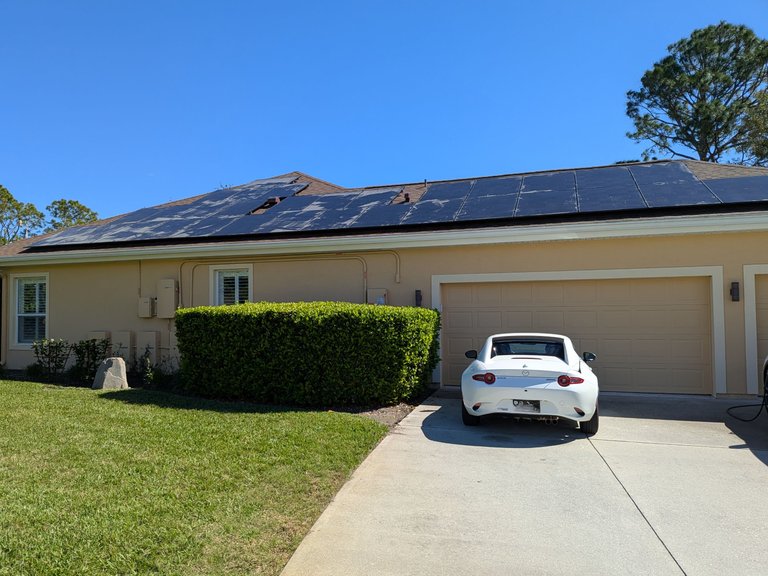
I compared and found that really dirty panel was still producing, but definitely at lower rate than the cleaner panels. This was producing only about 859 Wh vs the 875-900 Wh that the other panels were producing. I really like the reporting and live stats available from this Enphase system with the individual micro-inverters.

Now here below is the after cleaning picture, with most of the arrays much more consistent in production.
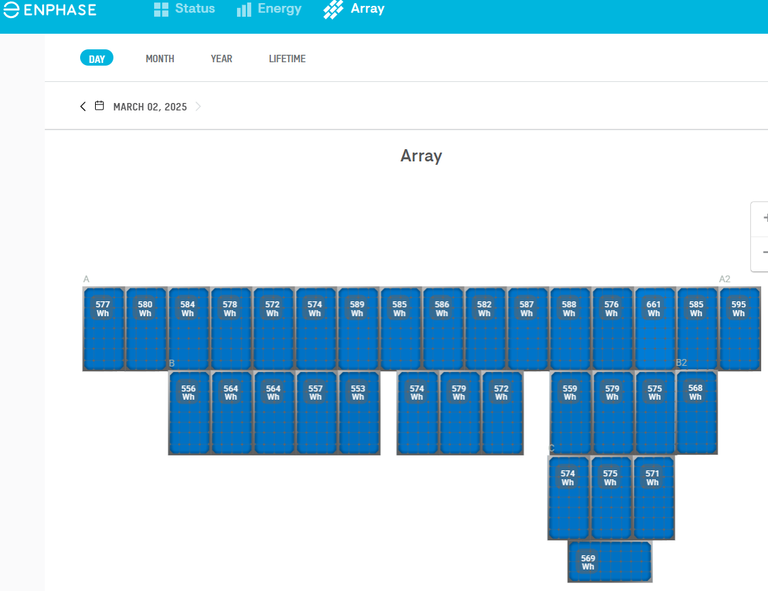
Also, when viewed in Live Status mode, this is the picture I like to see. Producing more than consuming, and exporting a good amount back to the grid (except one panel must be shadow or maybe I knocked something loose when cleaning).
Vehicle Charging:
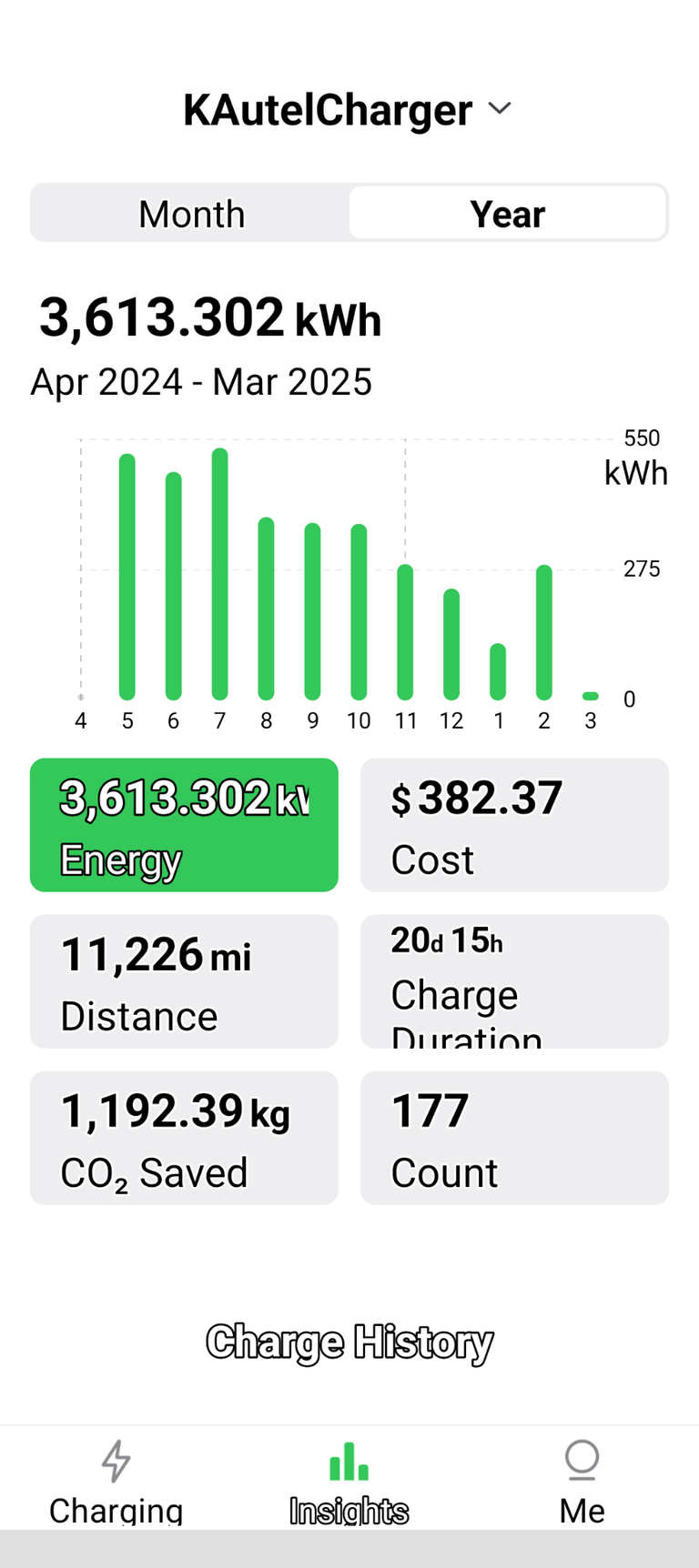
Now there's the vehicle charging. By owning an electric vehicle vs a gas engine, I'm saving mega dollars on maintenance (oil changes, muffler, tailpipes, brakes, etc.) but also on Electric vs. Gasoline costs. Here you can see that the Solar numbers above are even closer, with about 3.6 MWh going to the Vehicle this past year. I drove 11,226 miles (a lot for me with weekly trips up to Mayo in Jacksonville the first 8 months). The Electric and maintenance cost for the vehicle the entire year was about $382.37. I used to spend more than that each month for gasoline vehicle, and more than that for 2 bi-annual oil changes. If you compare the cost, a gasoline car getting 30mph with gas at $3 per gallon would have cost $1,122 for the same miles, not counting maintenance.
Love this AWD Chevy Blazer RS EV. It's so fun to drive with it's fast 0-60mph time of 6 seconds (3.4 seconds for the SS model), and even more when it's powered for free!
Here's the battery backup and "smart" ATS (Automatic Transfer Switch). 5kWh each for total of 20. They don't look quite so obtrusive now that we painted to match house. These worked flawlessly during the hurricane multi-day outage, and have been fantastic over at least a dozen little power outages that lasted only a few seconds. The nice thing about this style vs a generator, is that there is no discernable downtime or switching over time, it is in milliseconds vs the 2 minute outages we used to have whenever the propane generator would switch back and forth.
